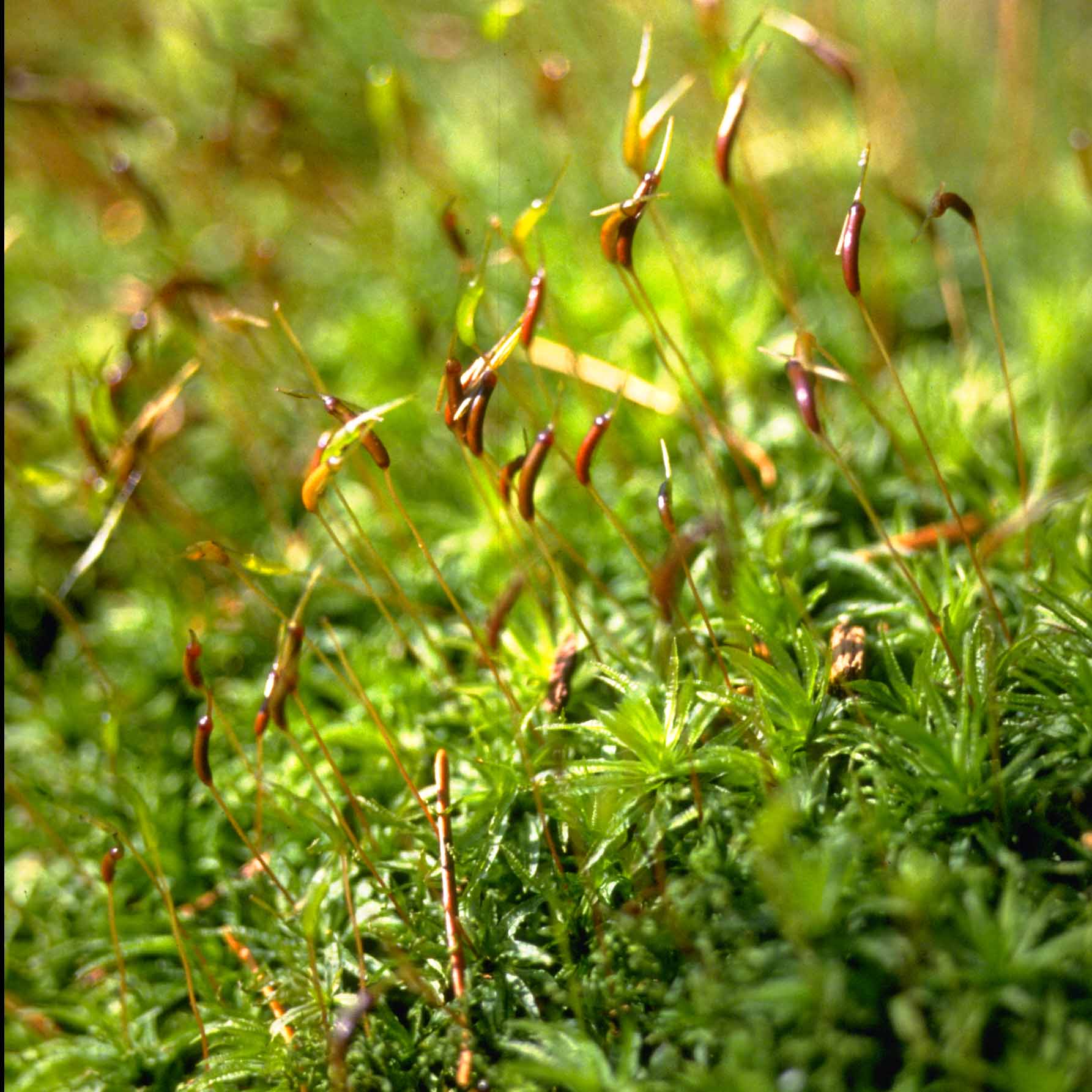| The Bryophytes are like the rest of land plants, Embryophytes (plants that produce an
embryo) and they have traditionally been viewed as a distinct lineage from other land
plants. They are not considered to have given rise to the vascular plants but they
probably were the earliest land plants (Qui & Palmer,
1999). Like the rest of the land plants, they evolved from green algal ancestors,
closely related to the Charophytes. They are a group of simple land plants,
well-adapted to moist habitats. Like other land plants, the Bryophytes:-
|
Bryophytes, in contrast,
|
 |
| sporophyte (2n)
gametophyte (n) |
The dominant generation is the gametophyte. The sporophyte is parasitic on the gametophyte. This stems from the embryo being retained in the female sex organ of the gametophyte. |
There are 3 groups of Bryophytes;-
| Mosses (~14,000 species) |
|
| Liverworts Leafy liverworts (~5,000 species) - predominately tropical and poorly covered in most texts Thallose liverworts (~3,500 species) |
|
| Hornworts (not covered in this course) |
| Moss - radially
symmetrical leaves usually with midrib |
Thallose liverwort -
bilaterally symmetrical |
Leafy liverwort - bilaterally symmetrical |
| These plants all require moist conditions for at least part of their life cycle. If
really wet, they may grow as epiphytes (plants that grow
on other plants). Many are pioneer plants, growing on bare rock. Many mosses are quite resistant to desiccation. They can lose water in the dry season, remain alive and then imbibe water when it rains. Similarly, many temperate mosses can survive freezing and thawing without damage. Being prostrate, Bryophytes have much of their surface in contact with the substratum and readily absorb moisture this way. Water often is drawn along the surface of these plants by capillarity and this external water movement is important. In certain mosses, specialised transport cells, hydroids and leptoids, analogous to the xylem and phloem of vascular plants, are found at the centre of the stem. Gases simply diffuse across the plant surface but liverworts also have special pores
which are permanently open for gas exchange. Certain mosses also have stomata on their
capsules (sporophytes). |
| Thallose liverworts are quite distinctive. They are flattened with a dichotomously
branching thallus. This group is absent from drier Caribbean islands like Barbados. |
Mosses and leafy liverworts can be confused.
Vegetative reproduction
Mosses and liverworts have two means of vegetative reproduction;-
| In some liverworts, gemmae are produced in cup-like structures called gemmae cups (labelled b, at left). |
Sexual Reproduction
The gametophytes (which are the stage of the life cycle we recognise as
the moss or liverwort) bear male sex organs termed antheridia (antheridium sing.)
and female sex organs termed archegonia (archegonium sing.).
| Flask-like archegonium (A) with single egg cell (B) at base of canal. Biodisc photomicrograph |
|
| Club-shaped antheridium (A) with mass of antherozoids (a) being discharged. A single biflagellate antherozoid or sperm cell (b) is also shown. |
| In some Bryophytes, male and female sex organs are borne on separate gametophytes.
Such species are said to be dioecious. In contrast, when
a single plant carries both male and female sex organs the species is said to be monoecious. The sex organs are typically borne in clusters, often surrounded by sterile hairs. These may also be borne in a head on a stalk in some species. At maturity, the antheridium bursts releasing the sperm cells or antherozoids. These can only swim a few cm so that if the archegonia are not adjacent the sperm rely on raindrops to "splash-launch" them to a suitable location. The sperm cells are very compact with the nucleus wrapped in a minimum of cytoplasm.
Some chemical exuded by the egg cell attracts the sperm which swims down the neck of the
archegonium and fertilises the egg. The resulting zygote is the start of the sporophyte
generation. This develops within the archegonium and remains parasitic on this for its
entire life (except a few moss sporophytes which develop photosynthetic capacity.) |
| We have
only looked at part of the Bryophyte life cycle. Click the button to move on to asexual reproduction in this group. |
![]() .
.
© C. M. Sean Carrington 1997
Modified 29 November,1999